A draft bill that would pave the way for NT$250 billion (US$8.05 billion) in funding for Taiwan to buy 66 F-16Vs from the US yesterday passed a preliminary review by the legislature’s Foreign Affairs and National Defense Committee.
The bill, which was approved by the Cabinet and signed off by Premier Su Tseng-chang (蘇貞昌) on Sept. 5, would allow the government to create a special budget of up to NT$250 billion to procure a new fleet of more advanced F-16 jets to reinforce and modernize the military fighter fleet.
The bill will now be sent to a cross-caucus negotiation.
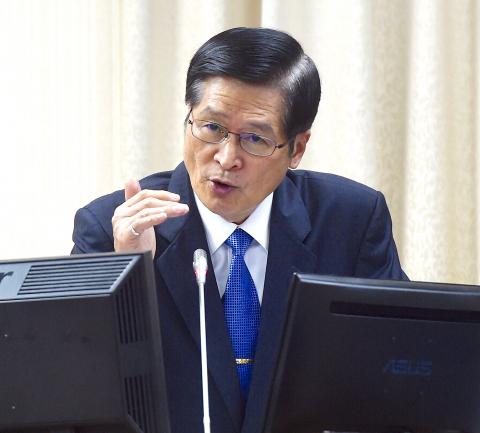
Photo: Chien Jung-fong, Taipei Times
The US Department of State approved the sale of 66 F-16Vs on Aug. 20.
The government and Washington still have to sign a letter of offer and acceptance to finalize the sale, which is expected to happen by the end of this year, the air force has said.
Taiwan hopes to take delivery of all 66 jets, in split shipments, by no later than 2026.
The F-16Vs are expected to be deployed at Chihhang Air Base in Taitung County, military sources said.
The air force in 2016 announced a NT$110 billion program to upgrade its fleet of 142 F-16A/Bs to the F-16V specifications, with the work expected to be completed by 2022.
The first four of the planes, retrofitted by state-owned Aerospace Industrial Development Corp (漢翔航空), have completed combat flight testing.
At yesterday’s committee meeting, lawmakers questioned Minister of National Defense Yen De-fa (嚴德發) and air force leaders about the government’s ambition of buying the more advanced Lockheed Martin F-35s from the US.
Democratic Progressive Party (DPP) Legislator Chen Man-li (陳曼麗) said she understood that delivery of the F-16Vs was expected to begin in 2023 and that the new planes would increase the air force’s fighting capabilities over the short term.
“Do we still have plans to buy F-35s?” Chen asked.
“According to the military’s projected threat assessment, we will need F-35s in the future,” Yen replied.
Independent Legislator Freddy Lim (林昶佐) then asked how soon the nation could expect to obtain F-35s and how the F-16V and the Chengdu J-20, believed to be the most advanced fighter of China’s People’s Liberation Army Air Force, compared.
Yen said the F-16V and the J-20 are about equal, as the J-20’s smaller radar cross-section is matched by the F-16V’s advanced radar system.
DPP Legislator Shih Yi-fang (施義芳) said the characteristics of fifth-generation fighters include vertical take-off and landing and low observability, a class to which Lockheed Martin’s F-22 and F-35, and the Chengdu J-20 belonged.
“Does buying the F-16V mean we are falling behind the curve?” he asked.
Air Force Chief of Staff Liu Jen-yuan (劉任遠) said the F-16V is a 4.5-generation fighter, due to the detection capabilities of its active electronically scanned array radar and infrared search and track systems.
“The J-20’s only advantage is marginally better stealth ability, and modern air combat is fought between integrated systems, not individual platforms,” Liu said.
Shih asked officials to explain if the F-16V could prevail against a J-20 in an one-on-one engagement.
“I have absolute confidence in the skills of our pilots to shoot down a J-20 one-on-one,” Yen said.
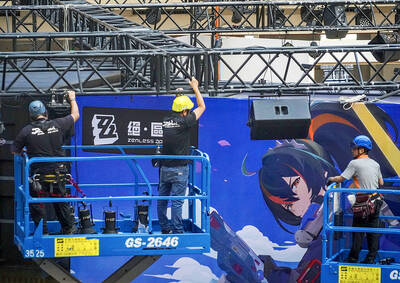
Taiwan is projected to lose a working-age population of about 6.67 million people in two waves of retirement in the coming years, as the nation confronts accelerating demographic decline and a shortage of younger workers to take their place, the Ministry of the Interior said. Taiwan experienced its largest baby boom between 1958 and 1966, when the population grew by 3.78 million, followed by a second surge of 2.89 million between 1976 and 1982, ministry data showed. In 2023, the first of those baby boom generations — those born in the late 1950s and early 1960s — began to enter retirement, triggering
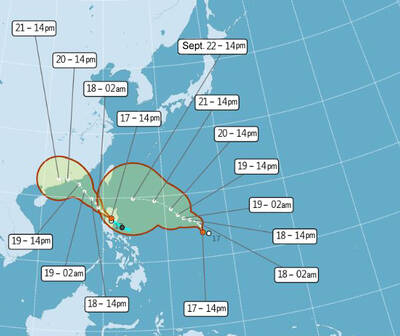
One of two tropical depressions that formed off Taiwan yesterday morning could turn into a moderate typhoon by the weekend, the Central Weather Administration (CWA) said yesterday. Tropical Depression No. 21 formed at 8am about 1,850km off the southeast coast, CWA forecaster Lee Meng-hsuan (李孟軒) said. The weather system is expected to move northwest as it builds momentum, possibly intensifying this weekend into a typhoon, which would be called Mitag, Lee said. The radius of the storm is expected to reach almost 200km, she said. It is forecast to approach the southeast of Taiwan on Monday next week and pass through the Bashi Channel
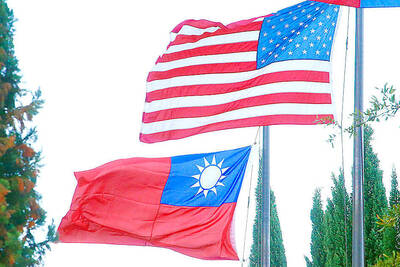
NO CHANGE: The TRA makes clear that the US does not consider the status of Taiwan to have been determined by WWII-era documents, a former AIT deputy director said The American Institute in Taiwan’s (AIT) comments that World War-II era documents do not determine Taiwan’s political status accurately conveyed the US’ stance, the US Department of State said. An AIT spokesperson on Saturday said that a Chinese official mischaracterized World War II-era documents as stating that Taiwan was ceded to the China. The remarks from the US’ de facto embassy in Taiwan drew criticism from the Ma Ying-jeou Foundation, whose director said the comments put Taiwan in danger. The Chinese-language United Daily News yesterday reported that a US State Department spokesperson confirmed the AIT’s position. They added that the US would continue to
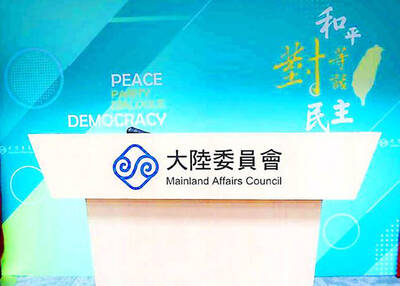
The number of Chinese spouses applying for dependent residency as well as long-term residency in Taiwan has decreased, the Mainland Affairs Council said yesterday, adding that the reduction of Chinese spouses staying or living in Taiwan is only one facet reflecting the general decrease in the number of people willing to get married in Taiwan. The number of Chinese spouses applying for dependent residency last year was 7,123, down by 2,931, or 29.15 percent, from the previous year. The same census showed that the number of Chinese spouses applying for long-term residency and receiving approval last year stood at 2,973, down 1,520,